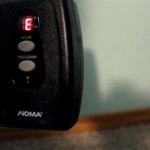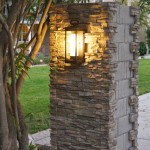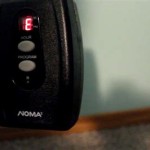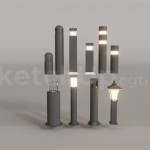Low Voltage Outdoor Lamp Post Lighting LED: A Comprehensive Guide
Outdoor lamp post lighting provides both illumination and aesthetic appeal to residential and commercial properties. The selection of appropriate lighting systems involves consideration of various factors, including energy efficiency, cost-effectiveness, and environmental impact. Low voltage outdoor lamp post lighting utilizing LED technology has emerged as a prominent choice due to its numerous advantages. This article explores the key aspects of low voltage outdoor lamp post LED lighting, detailing its benefits, installation considerations, maintenance requirements, and application scenarios.
Traditional high-voltage lighting systems often present challenges related to safety, energy consumption, and installation complexity. Low voltage systems mitigate these concerns by operating at a lower voltage, typically 12 or 24 volts, thereby reducing the risk of electrical shock and simplifying installation procedures. The integration of LED technology further enhances the appeal of low voltage systems, offering superior energy efficiency and longevity compared to conventional lighting sources like incandescent or halogen bulbs.
The transition to low voltage LED lighting represents a significant advancement in outdoor illumination. By understanding the nuances of these systems, property owners and landscape designers can make informed decisions to optimize both the functionality and visual appeal of their outdoor spaces.
Understanding Low Voltage LED Lighting Systems
Low voltage LED lighting systems consist of several core components that work in concert to provide reliable outdoor illumination. These components include the LED lamp post fixtures, a low voltage transformer, wiring, and optional accessories like timers and photocells.
The LED lamp post fixtures themselves are designed to house the LED light source and provide the desired aesthetic appearance. These fixtures are available in a wide range of styles, materials, and finishes to complement diverse architectural designs and landscape themes. The LED light source, the heart of the system, emits light when an electrical current passes through it. LEDs are highly efficient in converting electrical energy into light, resulting in significantly lower energy consumption compared to traditional lighting technologies.
A low voltage transformer is crucial for converting standard household voltage (120V or 240V) to the low voltage required by the LED fixtures (typically 12V or 24V). The transformer is typically installed near an existing electrical outlet and should be adequately sized to handle the total wattage of all connected LED fixtures. Choosing the correct transformer size prevents overloading and ensures optimal system performance.
Wiring is used to connect the transformer to the LED fixtures and to distribute power throughout the lighting system. Low voltage wiring is typically made of copper and is specifically designed for outdoor use. It is important to select wiring with the appropriate gauge (thickness) to handle the current load and minimize voltage drop. Voltage drop occurs when the voltage decreases along the length of the wire, resulting in dimmer lights at the end of the run. Proper wire sizing and run length calculations are necessary to mitigate voltage drop and maintain consistent illumination.
Timers and photocells are optional accessories that can be integrated into the system to automate lighting operation. Timers allow the lights to be turned on and off at predetermined times, while photocells automatically turn the lights on at dusk and off at dawn. These accessories enhance convenience and energy efficiency by ensuring that the lights are only illuminated when needed.
Benefits of Low Voltage Outdoor Lamp Post LED Lighting
The adoption of low voltage outdoor lamp post LED lighting offers a multitude of advantages over traditional lighting systems. These benefits span safety, energy efficiency, cost-effectiveness, and environmental considerations.
Safety is a paramount concern in any electrical installation. Low voltage systems inherently reduce the risk of electrical shock compared to high voltage systems. The lower voltage levels minimize the potential for dangerous current flow, making them safer for both installers and property occupants, especially in outdoor environments where exposure to moisture is common. This reduced risk contributes to a safer overall environment, particularly for families with children and pets.
Energy efficiency is a key driver behind the growing popularity of LED lighting. LEDs consume significantly less energy than traditional incandescent or halogen bulbs, typically using up to 75% less energy to produce the same amount of light. This translates into substantial savings on electricity bills over the lifespan of the lighting system. Furthermore, lower energy consumption reduces the overall demand on the power grid, contributing to a more sustainable energy future.
The long lifespan of LEDs contributes significantly to their cost-effectiveness. LEDs can last for tens of thousands of hours, often exceeding 50,000 hours, compared to the relatively short lifespan of incandescent or halogen bulbs, which typically last only a few thousand hours. This extended lifespan reduces the frequency of bulb replacements, saving on maintenance costs and reducing the inconvenience of replacing burnt-out bulbs. The initial investment in LED lighting is often higher, but the long-term savings on energy and maintenance make it a financially sound choice.
Environmental considerations are increasingly important in lighting decisions. LEDs are more environmentally friendly than traditional lighting options. They do not contain harmful substances like mercury, which is found in some fluorescent and high-intensity discharge (HID) lamps. The reduced energy consumption of LEDs also translates into lower carbon emissions from power plants, contributing to a smaller carbon footprint. Furthermore, the longer lifespan of LEDs reduces the amount of waste generated from discarded bulbs.
Beyond these core benefits, low voltage LED lighting offers design flexibility. LED fixtures are available in a wide range of styles, colors, and light outputs, allowing for customization to suit specific aesthetic preferences and lighting needs. The compact size of LEDs also allows for more creative fixture designs. The ability to control the light output and color temperature of LEDs also contributes to enhanced visual comfort and ambiance.
Installation and Maintenance Considerations
The installation of low voltage outdoor lamp post LED lighting requires careful planning and attention to detail to ensure optimal performance and safety. While the installation is generally simpler than high voltage systems, adherence to best practices is essential.
Prior to installation, it is crucial to plan the layout of the lighting system, considering the desired illumination levels and the placement of lamp posts. A detailed plan should include the location of the transformer, the routing of wiring, and the positioning of each fixture. Accurate planning helps to minimize wasted materials and ensure that the lighting system meets the intended design objectives.
The transformer should be installed in a weatherproof enclosure and located near an existing electrical outlet. The transformer should be properly sized to handle the total wattage of all connected LED fixtures, plus a safety margin of 10-20%. Overloading the transformer can lead to overheating and premature failure. The wiring should be buried underground using direct burial cable or run through conduit to protect it from damage. Connections should be made using waterproof connectors to prevent corrosion and ensure reliable electrical contact.
The selection of appropriate wiring gauge is critical to minimize voltage drop. Longer wire runs and higher current loads require thicker wires. Voltage drop calculators are available online to assist in determining the correct wire gauge for a given application. Proper wire sizing ensures that all fixtures receive adequate voltage, resulting in consistent illumination throughout the system.
Maintenance of low voltage outdoor lamp post LED lighting is generally minimal. However, periodic inspections are recommended to ensure that all connections are secure and that the fixtures are free from debris. Cleaning the lenses of the fixtures can help to maintain optimal light output. Any damaged wiring or fixtures should be repaired or replaced promptly to prevent potential hazards. Replacing LED lamps is infrequent due to their long lifespan, but when necessary, it is important to select replacement lamps with the correct voltage and wattage rating.
Properly installed and maintained low voltage outdoor lamp post LED lighting systems can provide years of reliable and energy-efficient illumination, enhancing the beauty and safety of outdoor spaces.

Techmar Locos 12v 1 5w Led Outdoor Post Light

Home Decorators Collection 3 Watt Equivalent Low Voltage Brass Led Outdoor Landscape Path Light With Waterproof Coating 1 Pack Ecp19 The Depot

Moray Bay 29 High Landscape Path Light W Low Voltage Bulb 76x58 Lamps Plus

Techmar Linum Decorative 12v Led Lighting

Reviews For Hampton Bay Low Voltage 50 Lumens Black Outdoor Integrated Led 4x4 And 6x6 Deck Post Light Weather Water Rust Resistant Pg 1 The Home Depot

Techmar Oak 12v 1w Led Outdoor Post Light

Techmar Laurus 12v Led Garden Postlight

In Lite Evo Low Dark 12v Led Voltage Outdoor Post Lights

Hinkley 1671bk Lv Estate Series Edgewater Led 21 Inch Black Outdoor Post Mount Lantern Low Voltage

Night Aglow Low Voltage Lighting







